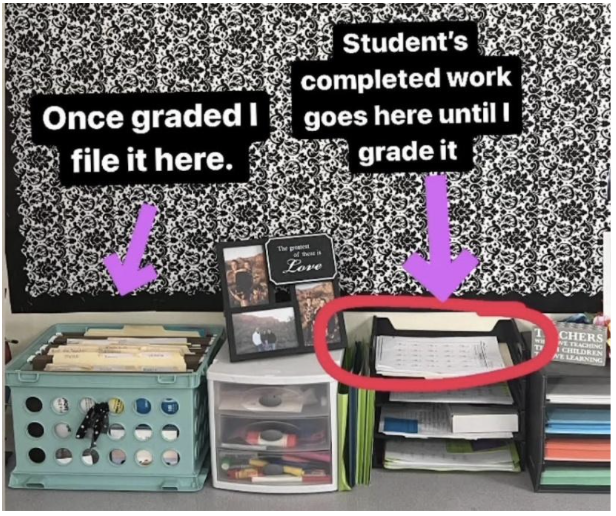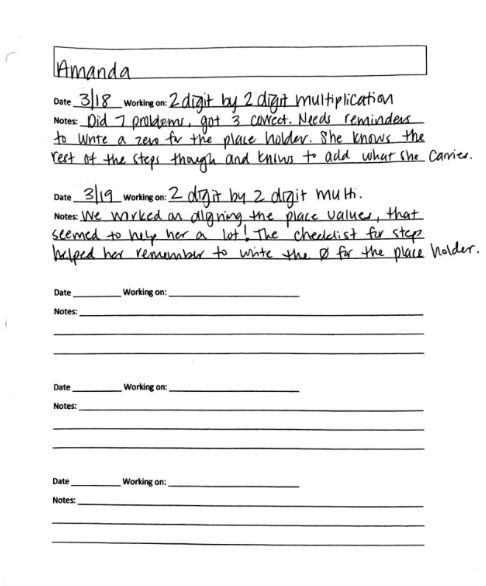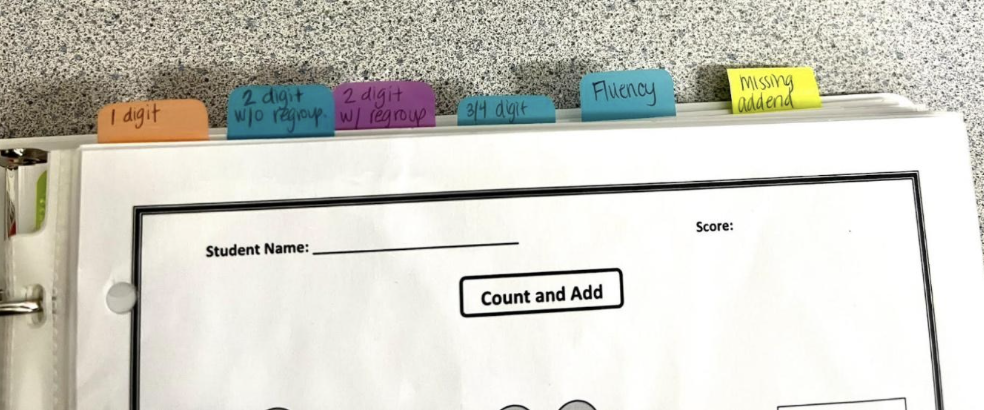I am excited to introduce this week’s guest blogger, Whitney from Rooted in Resource. She is going to share her best teacher organization tips for special education!

Special education teachers are inundated with paperwork and balancing every child’s needs. Simultaneously, ensuring the entire team is following the legal documents that have been put in place. It can be incredibly overwhelming. Knowing how teacher organization can help you as a special education teacher is key!
Before the end of the school year, I start creating my schedule for the next school year. It’s incredibly helpful especially if you have grades that switch classes. If you have this opportunity, it can help alleviate unnecessary complications. I would encourage you to at least have a conversation with your admin if you feel comfortable.
The first week of school I write down when all my student’s IEPs expire. This helps me know when I need to hold their annual IEP meeting. Next, I meet with our school psychologist and I mark the students with a little dot if they have a re-eval this year. This reminds me to touch base with the school psychologist when scheduling. Once I hold the IEP meeting, I highlight the name, so I know I am done with that IEP. I keep this near my desk so it’s easily accessible so I can view it and plan ahead.
During the first week of school, I jot down what related services the students have. This also helps remind me who I need to invite to IEP meetings when scheduling them. This helps me with teacher organization!

I also take the time to write down which students have small group testing so when there’s district or state testing I can quickly see who I need to pull into my classroom. I also write down who has the accommodation of text to speech so I ensure they have that accommodation when testing. In addition to these little notes, I also print out every student’s accommodation page on their IEP so I have it handy. I keep it in a separate IEP binder.
I go through my students’ goals and create a chart of their goals for each grade and each subject. Below is an example of my 4th graders math goals. It’s a “quick glance at their IEP goals” and it’s something I create just to make it easier to quickly see. I also provide these to gen ed teachers so they can see what the students are working on. This also helps me see which students are working on similar skills. This ups my teacher organization game!
At the start of the year, I create a folder for each of my student’s and in the folder, I have all their goal work for the quarter. At the end of the quarter when progress reports are due, and all their work is submitted I will refill their folders for the following quarter.
I would take the part of the goal that says it’s going to be collected three times per quarter and I would get 3 assignments that have two step word problems involving all 4 operations and I would put those in the student’s folder. This helps ensure that I have all the data points I need for the quarter to meet their goal. This is also a great way to know what each student is working on; they open their folder, and everything is in there.

When students turn in work, I use a teacher organization system. I bought a crate at Walmart and put file folders in there. I have a manilla folder for each student. Once I grade the assignments, I put it in their manilla folder (or I have a paraprofessional do this for me). When it’s time for progress reports all I have to do is pull out their folder! It’s all organized for me!
When you have multiple IEP meetings coming up and are in the process of completing them all at once it can be overwhelming trying to remember what you have and haven’t done. You need teacher organization to stay ahead of the game!
When I e-mail the teachers the input form, I also send them a calendar reminder for the day that it’s due. It helps me remember but also reminds them. I don’t like having to ask for it and feel like I’m bugging so the calendar alert helps alleviate that. If I haven’t received the form back and the teachers see the alert that the input form is due that day; the teachers usually will see me in the hallway and tell me they’re working on it and will have it to me that day. It helps take one more thing off my plate and keep this teacher organization.
I didn’t always use sign in sheets for my students but due to circumstances I felt like I probably should. I didn’t want to add more work on my plate and I’m all about working smarter not harder. When creating my schedule, I created it where my entire day is laid out, what subject I’m teaching and with which students. When I print my schedule it’s on 1 paper and shows my entire week. For my sign in sheet, I printed out my schedule and I have students highlight their name. If a student isn’t here I write “absent” above their name or write why I didn’t see them (field trip, etc.) I have created a routine where student’s come into my classroom and immediately highlight their name. I didn’t always do this, but I like having the data and being able to see any trends.
Over the years I have taught all grades K-6 as a special education teacher and have prepared materials over the years but didn’t want to throw them away. I wasn’t sure how to organize it all so the system I’m about to show you was years of accumulated materials that I finally organized a few years ago and it has made my life so much easier!
I made a large binder each operation (addition, subtraction, multiplication, and division) and a large binder for 1 step word problems and another binder for 2 step word problems. This also makes it extremely easy to fill their folders with goal work because I have several different copies of each skill printed and ready to go. I keep about 10 copies of each worksheet. If I get low, I have my paraprofessional make more copies.
I then organized the binder by skill from easiest to hardest. If I get a new student with a math goal, I most likely have materials for that skill. When my students meet their goal and have a new goal, I have materials all ready for them. This helps with teacher organization tools.

Inside the folder I have every assignment in a sheet protector. I like to put the answer key on top so when I’m grading it’s easy to find. Behind the answer key are blank worksheets for students.
Figuring out what teacher organization strategies fit your style is key! I have tried a few different methods over the years but all the organizational tips I’ve mentioned have remained the same for a few years now because it’s efficient and works for me. I hope you’ve found these to be as helpful as I have!
Want more teacher organization tips, read this blog!
What are you looking for?
COPYRIGHT © 2025 Full SPED Ahead